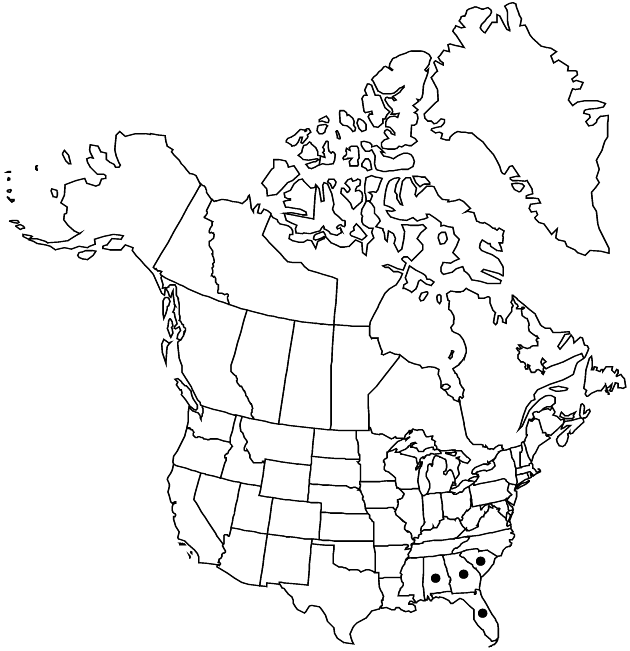Liatris tenuifolia
Gen. N. Amer. Pl. 2: 131. 1818.
Plants 40–150 cm. Corms globose. Stems glabrous or sparsely pilose. Leaves: basal and proximal cauline (arising from separated nodes) 1-nerved, linear to linear-lanceolate, 100–300 × 1–2 (–2.5) mm, gradually or abruptly reduced distally, essentially glabrous, glanddotted (proximal margins sometimes ciliate). Heads in compact, racemiform arrays. Peduncles (ascending) 1–7 mm. Involucres turbinate-campanulate, 5–7 × 4–5 mm. Phyllaries in 2–3 (–4) series, lanceolate to oblong or elliptic-oblong, unequal, essentially glabrous, margins with (pinkish purple) hyaline borders, apices usually rounded-retuse and minutely involute-cuspidate to apiculate. Florets 4–6; corolla-tubes glabrous inside. Cypselae 2.5–4 mm; pappi: lengths ± equaling corollas, bristles barbellate.
Phenology: Flowering Aug–Nov.
Habitat: Longleaf pine savannas, longleaf pine-scrub oak, turkey oak-bluejack oak, slash pine-sand pine-scrub, sand pine-scrub, sand ridges, hills, and flats, roadsides
Elevation: 10–100 m
Distribution

Ala., Fla., Ga., S.C.
Discussion
Selected References
None.
Lower Taxa
"barbellate" is not a number."fine" is not a number.